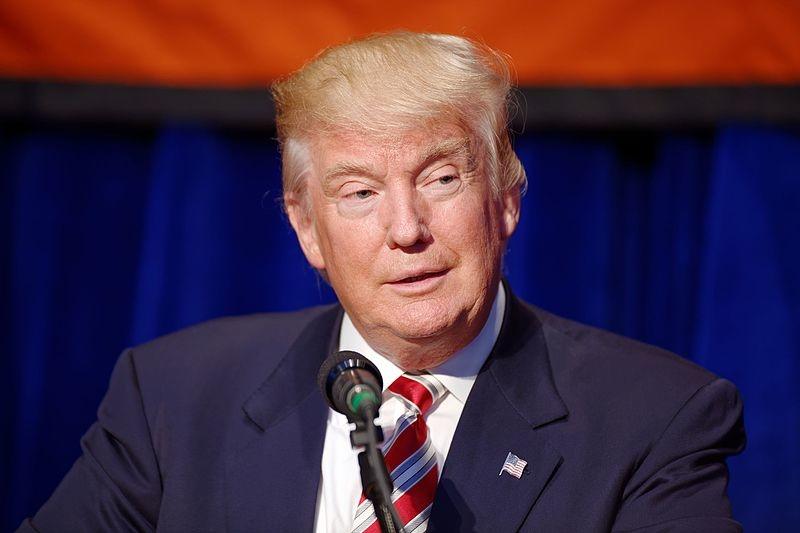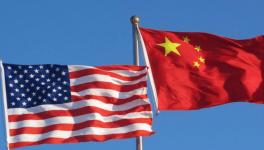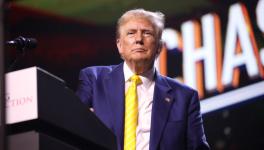The NSS, Last Hurrah for the US Empire

The launch of “America First” National Security Strategy (NSS) is last hurrah for the American Empire. The day on which the NSS was announced, America was trounced in the United Nations Security Council that overwhelmingly voted against Trump’s recognition of Jerusalem as Israel’s capital. Irrespective of the denial by the Indian foreign policy establishment, the fact is that the American power, in the international arena, has eroded considerably. The American confidence in their system has plummeted, especially after the 2008 financial crisis. Such loss of confidence in the sustainability of their system had triggered the Soviet fall. America’s poor economic health has made the US president acknowledge that “economic security is national security”. It is the realisation of this inevitable fall of the US Empire that made President Trump shout out loud in his NSS launch speech.
“America is coming back, and America is coming back strong…We are rebuilding our nation, our confidence, and our standing in the world … (W)e will stand up for ourselves, and we will stand up for our country like we have never stood up before.”
Trump is desperately attempting to claim that the new NSS is "a rebirth of patriotism, prosperity and pride." But his empty rhetoric is failing to pump up his nation’s confidence. According to a Brown University study, “an average American taxpayer has spent $23,386 on post-9/11 wars. By the end of the fiscal year 2018, the overall US spending on wars in Iraq, Syria and Afghanistan could reach $5.6 trillion.” The NSS that promises to preserve “peace through strength” only leads to further appeasement of the military industrial complex. The NSS calls for a wider role for nuclear weapons against “non-nuclear strategic attacks”. Broadening the use of nuclear weapons and enhancing the role of space-based weapon systems hardly promises peace. If burning trillions of dollars in trivial wars, stationing 291,000 US troops in 183 countries has failed to prevent American decline, then how will spending more money on military platforms help restore the American pride is the question that the American public is asking. Trump’s NSS relies on the old themes of terrorism and immigration and walls to buy support for greater military spending. The documents reticence on climate change is deafening.
The 2017 NSS, charts out the US strategic concerns region-by-region: The main focus is on the Indo-Pacific, where the strategy hinges on forward deployment of the US armed assets and building alliances, like the India, Japan, Australia and US Quadrilateral to meet the Chinese challenge. The NSS insists on building partner capacities to enable the alliance partners to share the burden of prolonged deployments The idea behind the concept of “forward partnering” is to let the US be the “managing partner” or the “systems administrator” in a larger concert of nations engaged in sustaining the global order dictated by private capital. Incorporating the military assets of the Asian partners in Indo-Pacific to achieve the US strategic objectives is designed to reduce the consumption of service-life of US assets. The process involves helping partners, like India, acquire capabilities to build and operate some old technologies, such as F-16 jets.
In Europe, the North Atlantic Treaty Organisation (NATO) allies are expected to pitch in by enhancing their defence spending to counter the Russia threat. The NSS expects other countries to contribute equally to the budgets of multilateral organisations like the UNO.
In the Middle East region, the new strategic document does talk about forward maritime deployment but without any references to partners. The international community remains unconvinced about the American intentions to make the global security, financial and economic architecture fair and transparent.
Russia, China have been singled out in the latest strategy document for being “revisionist” powers. The two Eurasian powers are not declared enemies but the document sees them as prime “rivals” that “challenge American power, influence, and interests, attempting to erode American security and prosperity.” The document describes China as “reckless” and “irrational,” and Russia as enemy of the “multipolar world”. Iran, is described by the NSS as “the world’s most significant state sponsor of terrorism.” The basic problem with Iran, China and Russia is that the trio forms the fulcrum of the Eurasian connectivity that directly impinges on the sea routes that the US commands.
Besides Iran, Pakistan was also target by Trump while unfurling his first NSS. He expected Pakistan to take “decisive action” against terrorist groups operating from its soil and disengage from playing a destabilising role on Afghanistan. The president reminded Pakistan of receiving more than $33 billion from US since the 9/11 terror attacks. Trump’s first tweet of 2018 was highly critical of Pakistan; it stated, “Get it straight: Pakistan is not our friend. We’ve given them billions and billions of dollars, and what did we get? Betrayal and disrespect – and much worse.”
Pakistan retaliated by reminding US of the contributions that they have made to meet the US strategic objectives in Afghanistan since early 1980s. The Indian media was palpably happy with the US-Pakistan spat. In India, Trump’s criticism of Pakistan was assessed as a vindication of India’s assessment of Pakistan as the chief sponsor of global terrorism. Unfortunately, hardly anyone in India has tried to see the Pakistani side of the argument. This is important because India’s strategic engagement with the United States is as deep as that of Pakistan. US is in the habit of using its allies and then discarding them at will. India needs to be vary of this American habit, however none in India seems to be bothered about the cost that it will have to incur to remain in the good books of Uncle Sam. The US is mistreating Pakistan because it has accepted Chinese money to build its industrial base. Washington is unhappy with Islamabad because it has provided China an opening into the Indian Ocean and is now contemplating using Yuan instead of US dollar in its trade with China. As more countries get into bilateral currency arrangements with China, the dominance of global trade by dollar will dent the US power.
The Indian establishment is happy because the 2017 NSS says: “We welcome India’s emergence as a leading global power and stronger strategic and defence partner.” For a long-time America has wooed India with generous titles, like Asian Tiger, great Power, and net security provider in the Indo-Pacific. The Indian elite which is perpetually seeking benedictions from US is more than willing to join the imperial choir. The net result is that today, US is India’s biggest arms supplier and has sold weapons worth $18 billion to the Indian armed forces. The strategic relationship has reached a stage where the India security affairs experts cannot imagine military-modernisation without the US support. The interoperability with US Pacific Command is more important than integration between the various elements within the Indian security establishment.
The Trump administration’s ‘America First’ approach to national security is hardly anti-empire. Post war American policies, of all hues, have pursued the single goal of perpetuation of the US Empire. Trump is no different, his professed isolationism is merely a tool to masquerade the consolidation of the empire, which is happening on a large scale through the use of internet technology. The penetration of the Indian social media, digital financial services network and military structures offers us great insights into the manner in which the American empire is attempting to preserve itself.
Disclaimer: The views expressed here are the author's personal views, and do not necessarily represent the views of Newsclick.
Get the latest reports & analysis with people's perspective on Protests, movements & deep analytical videos, discussions of the current affairs in your Telegram app. Subscribe to NewsClick's Telegram channel & get Real-Time updates on stories, as they get published on our website.























